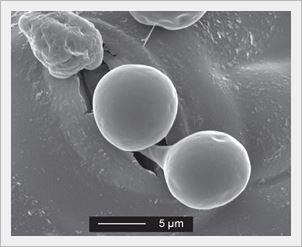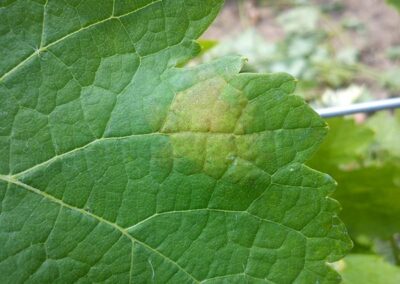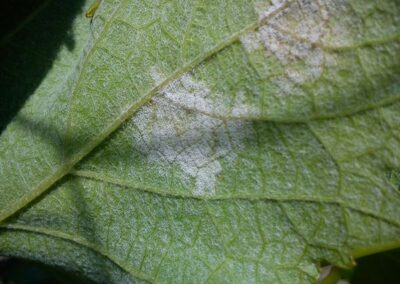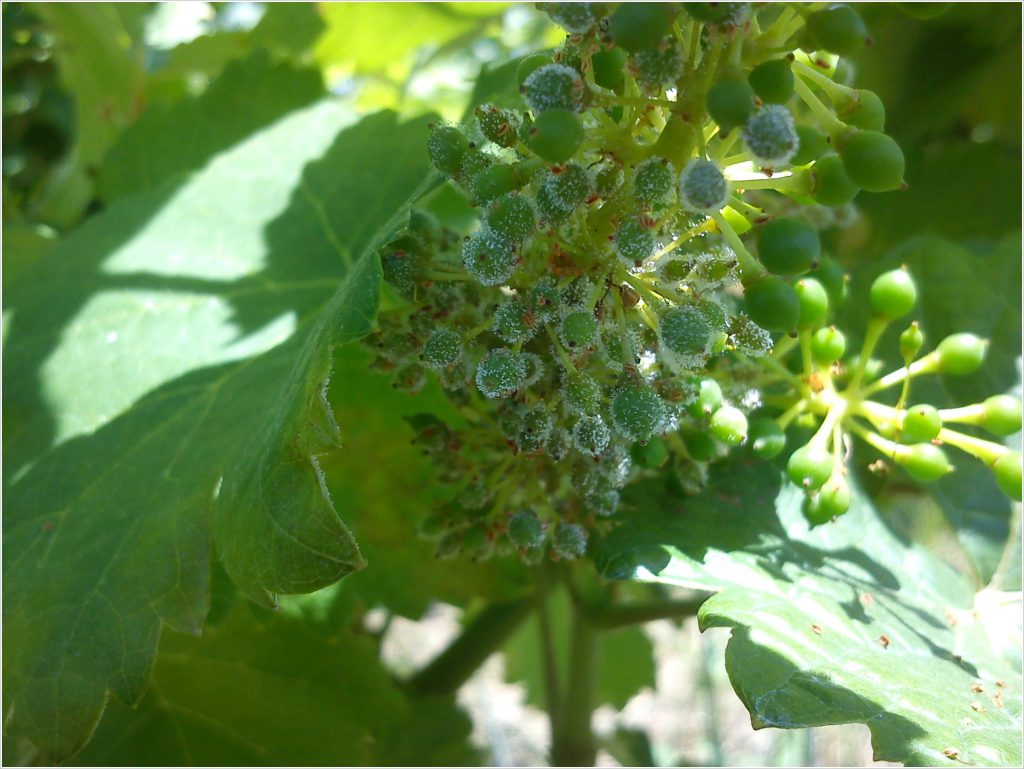
Grapevine downy mildew , Plasmopara viticola
Written by torosidiswine
Powdery mildew is the most serious disease on the vine, especially in areas with warm and humid climates. The first symptoms of the disease in varieties of the European vine (Vitis vinifera) were recognized in the Bordeaux region around 1878.
Today the disease is endemic in all wine-producing regions of the world with a warm and humid climate during the period of vegetative growth of the vine.The absence of rain in spring and summer in some areas limits the spread of the disease (eg Australia, California, Chile).
The disease affects all green parts of the plant, especially leaves, inflorescences and young rails.
The pathogen belongs to the Oomycetes, and according to the recent classification is a member of the family Peronsporomycetes (Dick 2002). This family is different from that of fungi (Mycota) and is part of Chromista, a kingdom which includes heterogeneous microorganisms.
In cases where the disease is severe, the leaves fall prematurely, the production and sugar content of the rail decreases, while the grapes are at risk of sunburn.
Severe infestations, especially during the flowering period that are not treated, can lead to total loss of production.
In addition, premature defoliation due to severe powdery mildew attacks endangers next year’s production, as plants are unable to form sufficient stocks.
All varieties of Vitis vinifera are susceptible to downy mildew infestation. Hybrids of Vitis vinifera, Vitis aestivalis and Vitis labrusca are less sensitive, while Vitis rupestris, Vitis cordifolia and Vitis rodundifolia are generally resistant.
Sporiangia is the vegetative form of powdery mildew. They occur in the sporangiospores, which have a tree form.
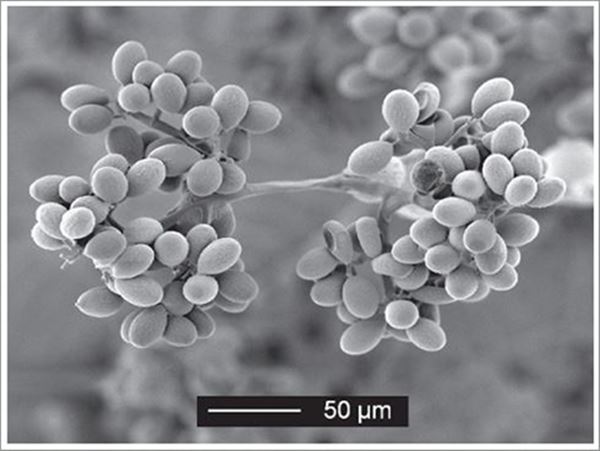
All varieties of Vitis vinifera are susceptible to downy mildew infestation. Hybrids of Vitis vinifera, Vitis aestivalis and Vitis labrusca are less sensitive, while Vitis rupestris, Vitis cordifolia and Vitis rodundifolia are generally resistant
Powdery mildew is an obligate pest. It needs living tissue to grow. So it can grow on all green parts of the plant.
Ovospores (wintering organs) are formed in late summer and autumn on the affected leaves, clematis or rails. With autumn defoliation they drift to the ground, where they overwinter on the infected leaves. There they can stay from 3 to 5 years (often up to 10 years).
Ovospores are the native organs of reproduction of powdery mildew. Their durable walls make them less susceptible to fungicides and extreme weather conditions than zoospores and spores.
At least 10 mm of rain (and/or irrigation), 10 oC or more, for at least 24 hours favor primary infections of the disease.
These conditions do not always ensure the progression of the disease, but they should mobilize the derivatives.
In particular, in order for oospores to germinate they require:
- The soil should be wet for at least 16 hours. This is usually achieved with 3-5mm of rain (and/or irrigation).
- The temperature should be maintained at the same time around 10 oC.
In these conditions the oospores germinate and release zoospores, which with raindrops or irrigation are transferred to the lower parts of the crown of the plant and are responsible for primary infections. Another 3-5 mm of rain (and/or irrigation) is required at this stage both for transport from soil to plant and for adequate wetting of the lower surface of the sexes which is a prerequisite for infection.

Monitoring weather conditions conducive to primary and secondary infections is a prerequisite for effective disease management.
The foliage should remain moist for at least 2-3 hours at 20 oC (or 4-5 hours at 10 oC) for the spores to complete the primary infections.
The zoospores that settle on the lower surface of the leaf form the mycelium of the fungus, which grows inside the leaf, causing the known oily spots. These spots usually appear 5 to 17 days (more often 5 to 10 days) after infection. The appearance of spots is faster when the weather is warm (18-27 οC). At higher or lower temperatures the incubation period is longer.
Usually primary infections are low, with the appearance of 1-3 spots on every 50 m of planting line, but they are quite difficult to detect. These primary infections alone cannot cause serious losses in production. However, they are very important for the progression of the disease as, when favorable conditions prevail, they allow the disease to spread very quickly.
Secondary leaf infections on leaves, vines, inflorescences, rails and grapes require at least 98% relative humidity, 13 °C or more, at least 4 hours darkness and leaf moisture in the form of a drop for at least 2-3 hours.
A prerequisite for secondary infections is the existence of oily spots.
These spots and other infected tissues produce sporiagiagia during hot and wet nights. The production of seedlings requires at least 4 hours of darkness with the temperature being at 13 οC or more and the humidity at 68% or more.
The foliage should also be wet for at least 2-3 hours from the moment the seedlings are produced. This can happen with rain, excessive irrigation and occasionally when conditions of very high relative humidity prevail
Secondary infections can occur at any time during the growing season when there are oily spots and the prevailing conditions are favorable for the progression of the disease.
Sporiangia is the vegetative form of powdery mildew. They occur in the sporangiosphores, which have a tree form.
One to ten zoospores can be produced from each spore. Zoospores can move in water but are mostly dispersed by wind and raindrops.
Primary infections are the beginning of the biological cycle of the disease and result in the appearance of oily spots.
The spores produced in these spots can disperse in wind or rain and cause infections in new locations.
Secondary infections are the main source for the spread of the disease.
Καρποφορία Περονόσπορου στην κάτω επιφάνεια φύλλου Μαλαγουζιάς
Καρποφορία Περονόσπορου στην κάτω επιφάνεια φύλλου Μαλαγουζιάς
Monitoring weather conditions conducive to primary and secondary infections is a prerequisite for effective disease management.
Automatic weather stations are used to monitor and predict weather conditions. These stations collect information on temperature, rainfall, leaf surface humidity, relative humidity and other meteorological parameters depending on their equipment.
These meteorological data are utilized by software for predicting the evolution of diseases that have developed, and give valuable information about the risk of occurrence of primary, secondary infections and ultimately about the evolution of the disease.
Alternatively, by using a minimum/maximum temperature thermometer and measuring rainfall amounts, we determine when conditions favorable for the progression of the disease prevail.
Monitoring the vineyard is necessary to detect any primary infections in a timely manner. Frequent visits to the vineyard are necessary, especially when conditions are favorable for the development of the disease.
For protection, cultivation and chemical methods of control are used. Several groups of plant protection products are authorised and used to protect the vine against powdery mildew. It is important when applying plant protection agents to alternate products of different groups in order not to develop resistance of the fungus.
Sources:
The life-cycle of Plasmopara viticola, cause of downy mildew of vine , Mycologist Volume 14 , Part 4 , November 2000.
Downy Mildew of grape, report on PLANT DISEASE RPD No. 705 , March 2004 DEPARTMENT OF CROP SCIENCES UNIVERSITY OF ILLINOIS AT URBANA-CHAMPAIGN.
Downy Mildew of Grape HYG-3013-08 Fact sheet Agriculture and Natural Resources 2008, The Ohio State University.
Downy Mildew of Grape Plant Pathology Fact Sheet University of Kentucky – College of Agriculture.
Chapter 4 Fungi of Grapes , Hanns-Heinz Kassemeyer and Beate Berkelmann-Löhnertz H. König et al. (eds.), Biology of Microorganisms on Grapes, in Must and in Wine, © Springer-Verlag Berlin Heidelberg 2009 (photo)
Our Wines
Shop
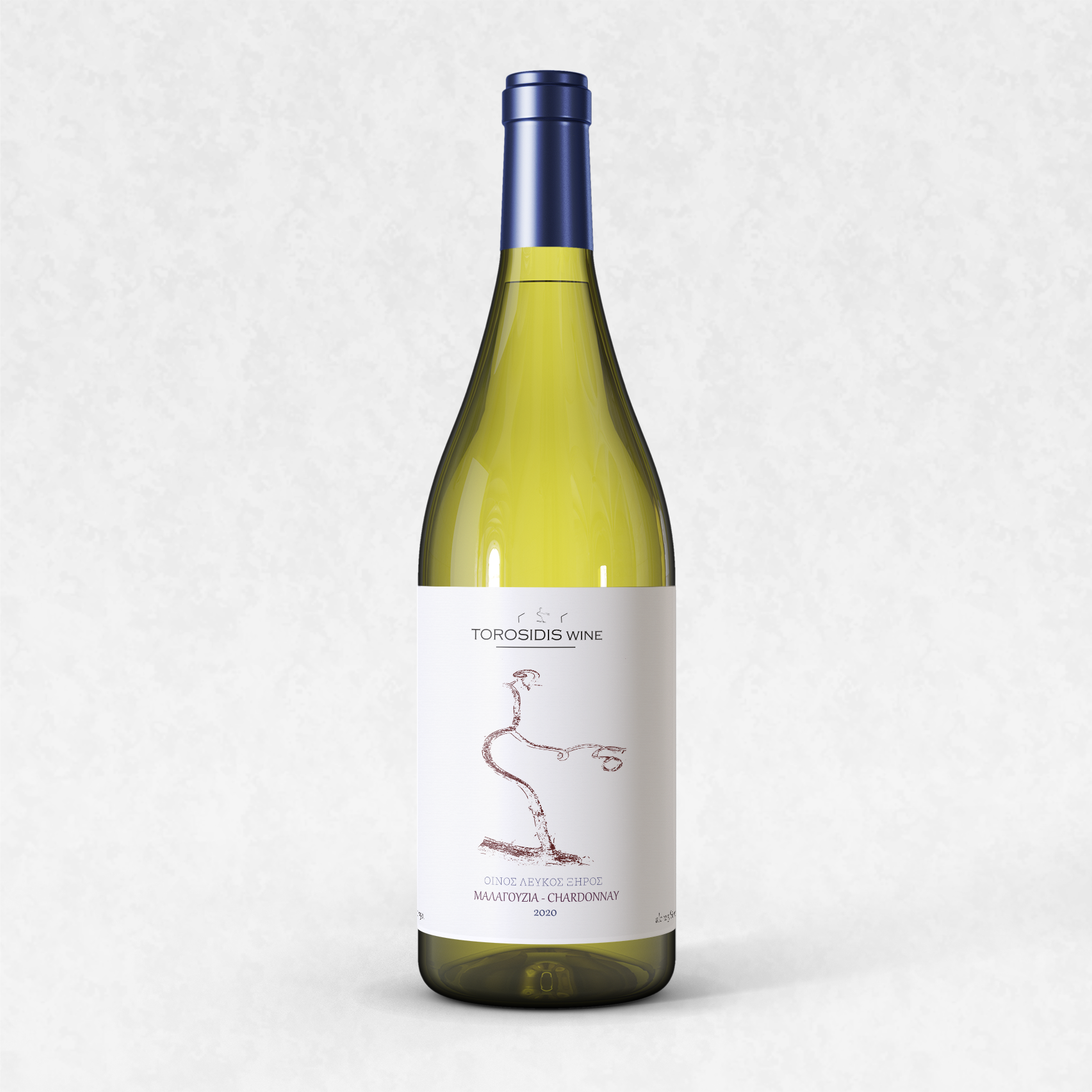
Related Articles
Related
Κριτήρια προτεραιότητας για τη χορήγηση αδειών φύτευσης αμπελιού
Προκειμένου να χορηγηθούν οι άδειες νέας φύτευσης εφαρμόζονται κριτήρια προτεραιότητας όπως αυτά έχουν επιλεγεί για την κάθε περιφέρεια κάθε αγροτεμάχιο λαμβάνει βαθμολογία στο κάθε κριτήριο με βάση τον συντελεστή βαρύτητας W και τον συντελεστή συμμόρφωσης Pt. Η...
Αιτήσεις για άδειες φύτευσης αμπελιού για το 2024
Οι ενδιαφερόμενοι για την απόκτηση αδειών νέας φύτευσης οινοποιήσιμων ποικιλιών αμπέλου, υποβάλουν ηλεκτρονικά, μέσω της Ψηφιακής Υπηρεσίας Υποβολής Αιτήσεων Αδειών Νέων Φυτεύσεων της ιστοσελίδας του ΥΠ.Α.Α.Τ, αίτηση- υπεύθυνη δήλωση από την 1 Σεπτεμβρίου μέχρι και...
Until 20 November 2023, applications for the restructuring and conversion of vineyards of the 2023-2024 wine year.
The period of application of the intervention for restructuring and conversion of wine-growing areas in our country concerns the wine year 2023-2024.The intervention shall cover one or more of the following actions: (a) varietal conversion of vineyards, including...

